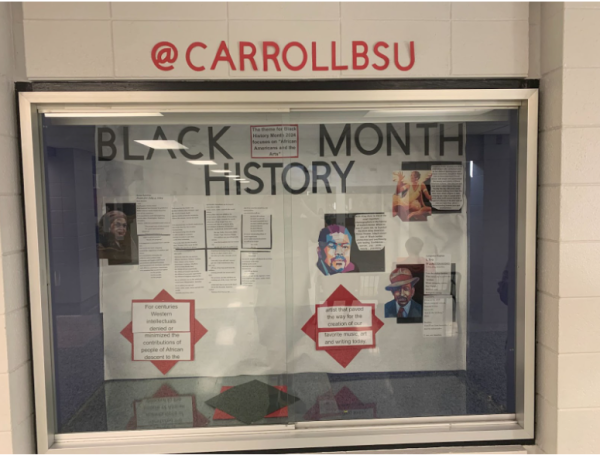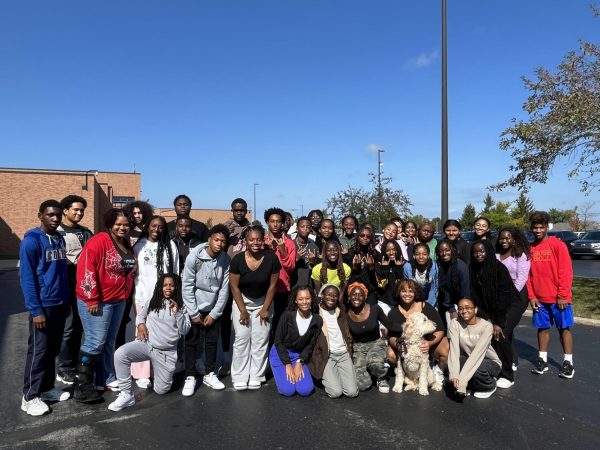
In a glass case in the commons is a board highlighting important people of color in American history. Although the display looks like a gesture of kindness from the school to represent minorities, it was all done by the Black Student Union themselves.
When Black History Month was created in 1976, U.S. President Gerald Ford said the month was to “honor the too-often neglected accomplishments of Black Americans in every area of endeavor throughout our history.” However, the school may not live up to this.
“Until recently it wasn’t until me and other POC took it to our hands and go to the office and basically fight for our representation,” said senior Joy Kabangu, social media manager of the Black Student Union.
Although a display is up, the lack of action by the student council and administration brings to mind the issue of representation for students of color.
“I feel somewhat represented,” said senior Jathniel Ahonsi. “I mean in most of my classes I am the only Black kid, but they did do the Black History Month display.”
Like Ahonsi, freshman Anias Peters feels a little represented. The school lacks diversity in the first place, but the minimal work done to create a welcoming environment is unfair to the student body.
“In the hallways, I hear the N-word said a lot,” said Peters.

Most Black students want to feel represented for their struggle. Along with representation, fostering community is essential.
“I expect community, not just of Black people or people of color, but anyone in general because Black history affects everyone,” said Kabangu.
Ahonsi shared similar opinions.
“Overdoing it can put more focus on the differences, and I feel like having us connect is better,” said Ahonsi.
Where the school was lacking, Black students stepped up to showcase the significance of Black History Month. February might simply be a month to some, but to others, it is an important month where they can advocate for themselves.




